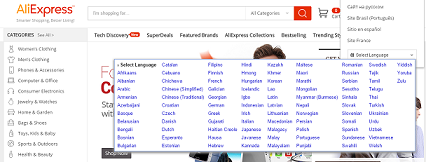Website Content & Translations
Lichi Translation Tips
In today’s world, the internet, specifically websites, represent the appearance of the company. Regardless of the product or service sold, a website is the first place potential customers look at before making the purchase. They will look at the graphic images, the messages portrayed, and the online recommendations!
Many mid- to large-size organizations find that they wish to expand their sales efforts into international markets. For example, a German organization might want to sell to the North American market and vice versa. A French company might want to sell to the African market, or a North American company will want to sell to Asia etc…
Research shows that most individuals prefer to purchase in their own language, even if they are comfortable with English, the world’s most common language. Adapting to the local language will actually increase website sales! Clear evidence of this can be seen in the humongous e-commerce websites such as AliExpress that offer the surfer an option to purchase in practically any language.

So, how do companies adapt their website’s content to the world?
Creating content or graphics that are the right fit for a new market in a new country is not as simple as it sounds. There are many barriers to getting a clear message across which go beyond the translation.
Here are some tips the Lichi Translation’s international team has collected in helping numerous companies adapt content:
- Find out which countries your organization is interested in selling to!
More doesn’t mean better. We often advise our clients to narrow their sales targets to specific countries and start small. This enables suitable business research and planning, while investing the company’s resources (manpower, finances, time) wisely.
Check your Google analytic results to define which countries traffic is coming from and prepare a landing page or a few pages in the relevant language.
Understand the language you pick out: For example, it is not enough to select the Chinese language – you must know if your potential market is mainland China – you then need to use Simplified Chinese – or if your customer base is in Taiwan, you will need to use traditional Chinese.
- Quantify and Qualify!
When it comes to the actual website, find out which content is relevant for which country.
In most cases companies choose to translate only part of the web content from the original language. There is no point in translating your local event page for people who live on the other side of the globe.
Choose the relevant pages: about us, product or service information, and call to action. With time, as the actual sales progress begins to happen we advise you to continue uploading more relevant content.
Check how many pages or words the text includes, so you can evaluate translation costs and build your budget. More text is more money! Take this into consideration…
If you want your website to be fully localized, remember there is more than what you can see. There are tabs, buttons, tooltips, messages, error messages – all these need to be fully translated.
- Look and Feel
If you are trying to massively penetrate a new market, think also about the look and feel of the website. Do you want it to have a different look graphically, or do you want it to look identical to your original website?
For example, Chinese websites look very different from North American or European websites, so if you are looking to reach a Chinese consumer you may want to consider preparing an entirely new website, 100% Chinese. Or, on the other hand, you may want to consider a duplicate website, if you want to message a global international feeling to your business.
- Get support from the experts
Match the right experts to each project. The translator must not only speak the language as a ‘mother tongue’ but must also have prior relevant knowledge – of the industry, the country’s culture, and possibly even the product. For example, a technology-oriented translator for a technological product and a legal translator for legal content.
- Project Management
Translating content requires assigning the translation to the most suitable translator, coordinating guidelines, supervising timely delivery, and overall back-and-forth communications. When translating content into many languages you must deal with many translators; it’s a complex and time-consuming task.
Multilingual material should be delivered in an organized way, so that whoever inserts the text into the back office knows what goes where. It’s not easy to understand a Korean or Arabic script – you don’t want to cut words or omit content, and you sure don’t want to get lost in the translation.
Once you’ve uploaded all the information, don’t save on the final touch. Have a native speaker review and make sure everything is in place. It’s so easy to omit a Chinese character…
Contact us today for assistance with your website content and translation!
Lichi Translations was founded in 1997. The company offers translation services in all languages and supports companies in their business activities worldwide.

